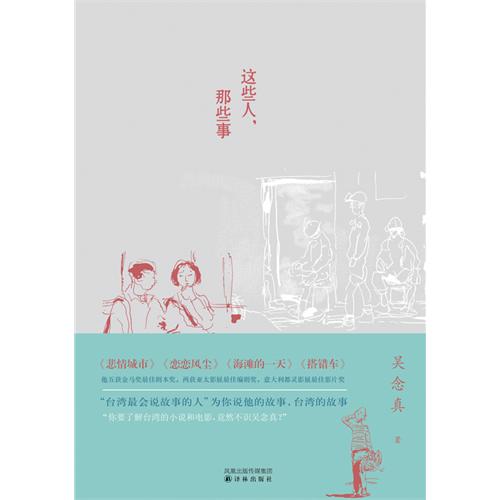这些道理没有人告诉过你-第17章
按键盘上方向键 ← 或 → 可快速上下翻页,按键盘上的 Enter 键可回到本书目录页,按键盘上方向键 ↑ 可回到本页顶部!
————未阅读完?加入书签已便下次继续阅读!
* Breaks down large pieces of work into smaller; simplified and more manageable parts。 把大任务分割成简单, 容易操作的小任务来完成。
3。 Customer Service Orientation 以客户为导向
Definition: 这个能力是什么?
Why is it important?
这个能力为什么重要?
Customer Service Orientation is the willingness and ability to give priority to customers; delivering high quality services which meet their needs。 In this context the 'customer' refers both to internal customers (i。e。 other departments) and external customers (i。e。 target groups in the business)。 乐于并有能力有限考虑客户, 按照顾客的需求提供高质量服务。这里所指的客户, 包括内部客户(如其他部门), 也包括外部客户(如业务上的客户)。
This behaviour is about fully understanding customer needs in order to develop and deliver services。 只有拥有这个态度, 才能全面理解顾客所需, 以拓展并实施服务。
第一阶段
Delivers a service 提供服务
第二阶段
Adds value 帮助客户提升个人价值
第一节 面试官的“好”与“恶”(5)
第三阶段
Addresses underlying needs 注意到潜在需求
第四阶段
Serves long term interests 服务于长期利益
Keeps customers up to date and informed。 Acts promptly to ensure customer problems are resolved。 Understands that each customer is different。 Delivers what is expected; not what they think the customer wants or needs。 及时与客户沟通, 快速反应, 保证客户的问题被解决。明白每个客户不尽相同。按客户的期望提供服务, 而不是自己认为客户需要什么就提供什么。(备注: 当你强调自己为客户快速服务的时候, 别忘了: 这是最起码的要求!)
Thinks about the customer when undertaking day…to…day work。 Questions “how is this adding value for the customer?” Makes decisions with the customer in mind。 Takes pride in delivering a high quality product or service。 在日常工作中为客户着想。经常思考: “这件事情, 如何能帮助这个客户有所提高?”做决策的时候, 心中想着客户。以提供高质量产品和服务为荣。
Takes time to question and understand the real; underlying needs of customers; beyond those initially expressed。 Establishes systems to collect customer feedback。 专门安排时间质询并了解客户真正的、 潜在的需求, 而不仅仅是客户表达出来的需求。建立能有效收集客户反馈的制度。(备注: 你专门安排时间进行思考了吗?还是每天忙于各种细节?)
Always works closely with customers; developing an independent view of their needs and acting in their long…term interest。 Moves customer thinking forward; helping them understand issues beyond their day…to…day work。 向来与客户紧密合作, 对客户的需求有独到见解, 为他们的长远利益着想。推动客户进步, 帮助客户跳出日常工作的窠臼, 看到关键问题。(备注: 你跳出日常工作的窠臼了吗?还是每天做同样的事情?)
Warning signs: 令面试官“恶”的行为
Positive indicators: 令面试官“好”的行为
* Sets aside thinking time to e up with more creative ideas for getting things done。 Is willing to be different。 专门预留思考时间, 以想出更创新的好主意。乐于与众不同。
* Responds to new ideas by discussing why they might work instead of telling others why they won’t work。 遇到新观点时, 以“如何能使之可被执行”的心态进行讨论, 而不是告诉别人不可行。
* Asks colleagues to identify key factors that hinder performance and alternative ways to achieve results, and use these to plan improvements。 主动请同事分析影响自己工作效果的原因, 有什么别的办法能把事情做得更好, 使用同事的建议来计划自己的改进方案。
* In preparing for meetings or presentations; anticipates problems and criticisms that others might raise so as to be ready to address them。在准备会议和陈述的时候, 预测别人可能会提出哪些问题和批评, 并提前想好对策。
* Understands the conditions for effective partnership working: shared goal setting; knowledge sharing/ networking。 理解有效的伙伴关系必须建立在双赢合作的基础上: 目标一致、 共享知识与关系网。(备注: 让别人帮助你的最好办法, 就是和他成为你的合作伙伴。)
* Brings the team together regularly to discuss ways of working together more effectively。 定期开会, 讨论如何更有效工作。
第一节 面试官的“好”与“恶”(6)
* In meetings with individuals; outlines responsibilities and standards clearly。 与人面谈时, 清楚表明职责与标准。
* Confronts people directly and openly; but discreetly; over poor performance。 直接而开诚布公地批评别人, 同时也保持谨慎。
* Seeks feedback and considers it carefully。 主动询问别人对自己的看法, 仔细斟酌。
* Works with others to bring strengths to projects that s/he may lack。 主动和他人合作, 弥补自己在某个方面的不足。
* Considers her/his approach at meetings or in projects to suit needs of others; rather than own preferences。 在开会或做项目的时候, 考虑自己的举措是否符合他人的需要, 而不是自己的喜好。
* Develops the habit of checking what others are thinking by asking ‘Am I being clear?’ ‘Let me check what you are thinking at this stage’。 养成询问别人想法的固定习惯, 经常这样问: “您清楚了吗?”“让我听听您现在是怎么想的。”
* Treats the concerns of other departments as important。 拿别人的事儿当回事儿, 重视其他部门的想法。
* Co…operates to meet team goals even at expense of personal preferences。 为了团队目标, 摒弃个人好恶。
* Fails to recognise or establish different customers’ needs。 没有意识到不同客户有不同的需求。
* Keeps customer feedback to himself or herself and does not share learning。 没有把客户的反馈分享给大家。
* Treats all customers in the same way。 以同样方式对待所有顾客。(备注: 你email的口吻, 是否从来不变?是否因为对方是豪放的人而少一分客气?是否因为对方是谨小慎微的人而多一分严谨?)
4。 Entrepreneurship 有开拓型思维
Definition: 这个能力是什么?
Why is it important? 这个能力为什么重要?
This is about the ability to formulate new ideas or to adapt or use existing ideas in a new or unexpected way to solve problems; and to think ahead to spot or create opportunities and maximise them。 有创新想法, 或者以一种全新的、 出人意料的方式调整或应用现有的方法解决问题, 而且有前瞻性,能发现并制造机会, 并将机会最大化。
Within the organisation; this behaviour is about making changes that increase the effectiveness of our work。 Externally; it is about increasing our petitiveness。 It is important to understand that everyone can make a difference。 在机构内部, 这种能力可以使我们提高工作的有效性。在机构外部, 它使我们增强竞争力。每个人都有创新能力。
第一阶段
Improves and acts now 追求进步, 并立刻行动
第二阶段
Adapts existing approach and acts & looks ahead 调整现有方法, 并有前瞻性
第三阶段
Anticipates the future; and develops new products & services 预测未来, 开发新产品和新服务
第四阶段
Creates opportunities & acts for the long term 创造机会, 按照长远目标采取行动
Addresses current opportunities and problems by improving and adapting existing approaches。 通过改善和应用现有方法, 抓住眼下的机会, 解决当前问题。
Identifies and exploits opportunities in the short…term。 Applies own know…
第一节 面试官的“好”与“恶”(7)
ledge and expertise to developing new approaches to exploiting these。 判断并利用短期机会。应用自己的知识和技能开发新方法, 以利用这些机会。
Able to spot opportunities and problems in the medium…term (3 to12 months); and develops new approaches; products and services based on these。 Uses networks to seek fresh ideas。 能够看到中期机会(3至12个月), 并开发新方法、 新产品和新服务。使用人际网络寻找新想法。
Sees and acts on long…term (beyond 12 months) opportunities and problems。 Formulates pletely new and 'off the wall' ideas and concepts; which create a potential opportunity; and uses innovative approaches to allow them to be realised。 These may address underlying needs that have not yet been identified by customers。 能看到长期的机遇和挑战(超过12个月), 并以此采取行动。创立全新的或者“闻所未闻”的新想法和新观念, 并制造潜在的机遇, 并使用独创性的方法实现创新想法。这些行动可能会解决客户自己尚且没有看到的潜在问题。
Warning signs: 令面试官“恶”的行为
Positive indicators: 令面试官“好”的行为
* Uses well proven or familiar approaches without adapting or improving。 循规蹈矩, 不求变革。
* Unable to step back from cu




